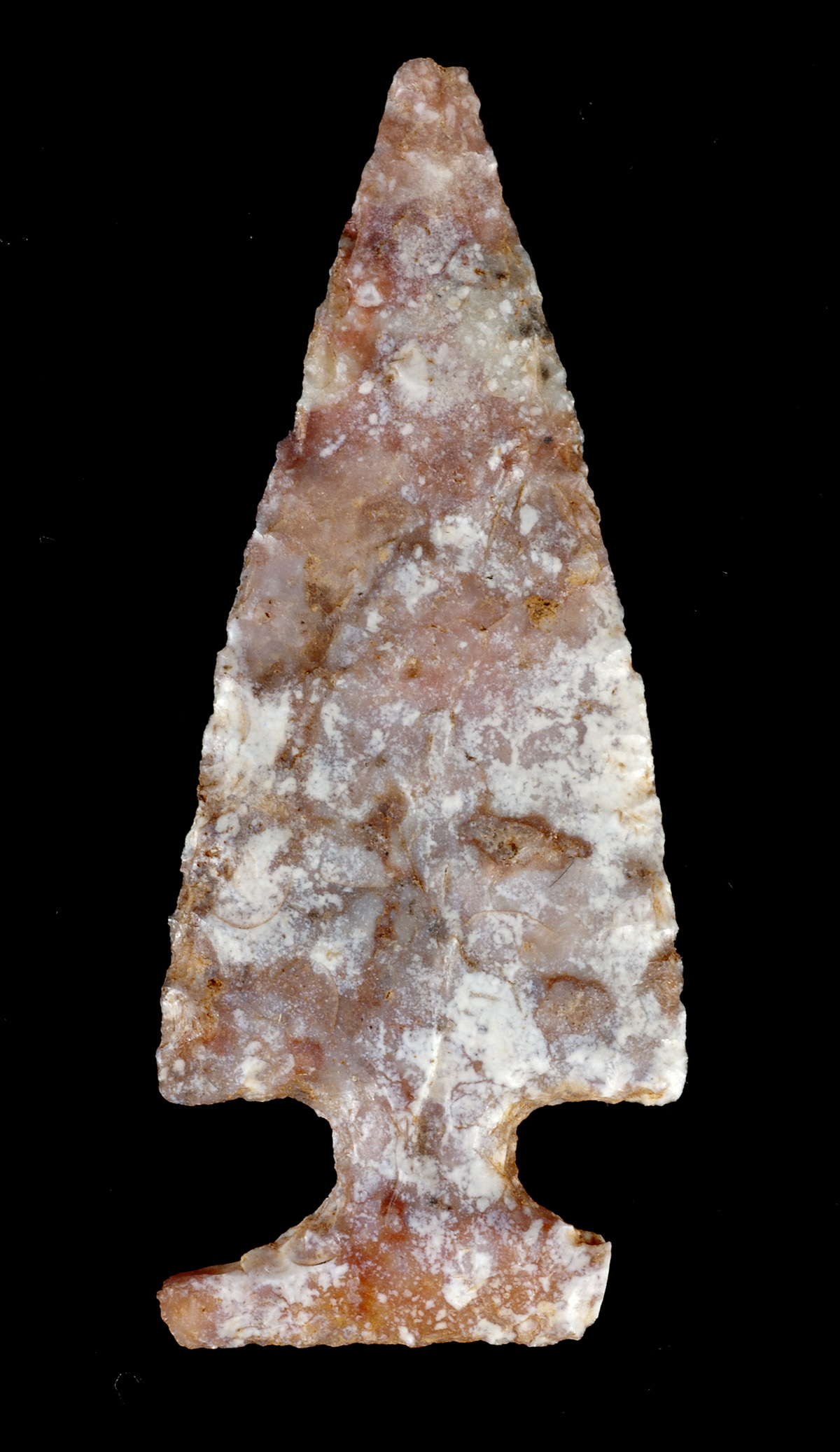Archaeological Culture: Archaic, Ancestral Pueblo, Basketmaker
Geographical Range: Southeastern Utah, northern Arizona south to the Little Colorado River Valley, southwestern Colorado, and northwestern New Mexico.
Date Range: 2750 – 1650 B.P. (Lyndon 2005).
Size: Average: 42.1 mm long, 21.2 mm wide, and 5 mm thick; stem length: 9.8 mm (Lyndon 2005:Table 12) .
Shape: Triangular with a narrow neck, large side notches, and a straight eared base.
Cross-section: Flattened to biconvex.
Base: Straight; generally equal to or narrower than the blade width.
Flaking; Percussion and pressure; scars widely spaced; random.
Notching: Low-set U-shaped side notches, placed perpendicular to the axis; occasionally diagonal (corner).
Materials; Obsidian, chert, petrified wood, and rhyolite.
Other Names; Justice (2002) calls these points Black Mesa Narrow-necked.
Comparisons: Elko series and San Pedro points are similar in size and notching, but lack the narrow neck of the Western Basketmaker II points.
Compiled from the following sources:
Justice, Noel D. (2002) Stone Age Spear and Arrow Points of the Southwestern United States. Indiana University Press, Bloomington.
Lyndon, Michael G. (2005) Projectile Points as Indicators of Preceramic Occupation of the Coconino Plateau. M.A. thesis, Department of Anthropology, Northern Arizona University, Flagstaff.
Compiled by:
Meghann M. Vance, Northern Arizona University Anthropology Laboratories

